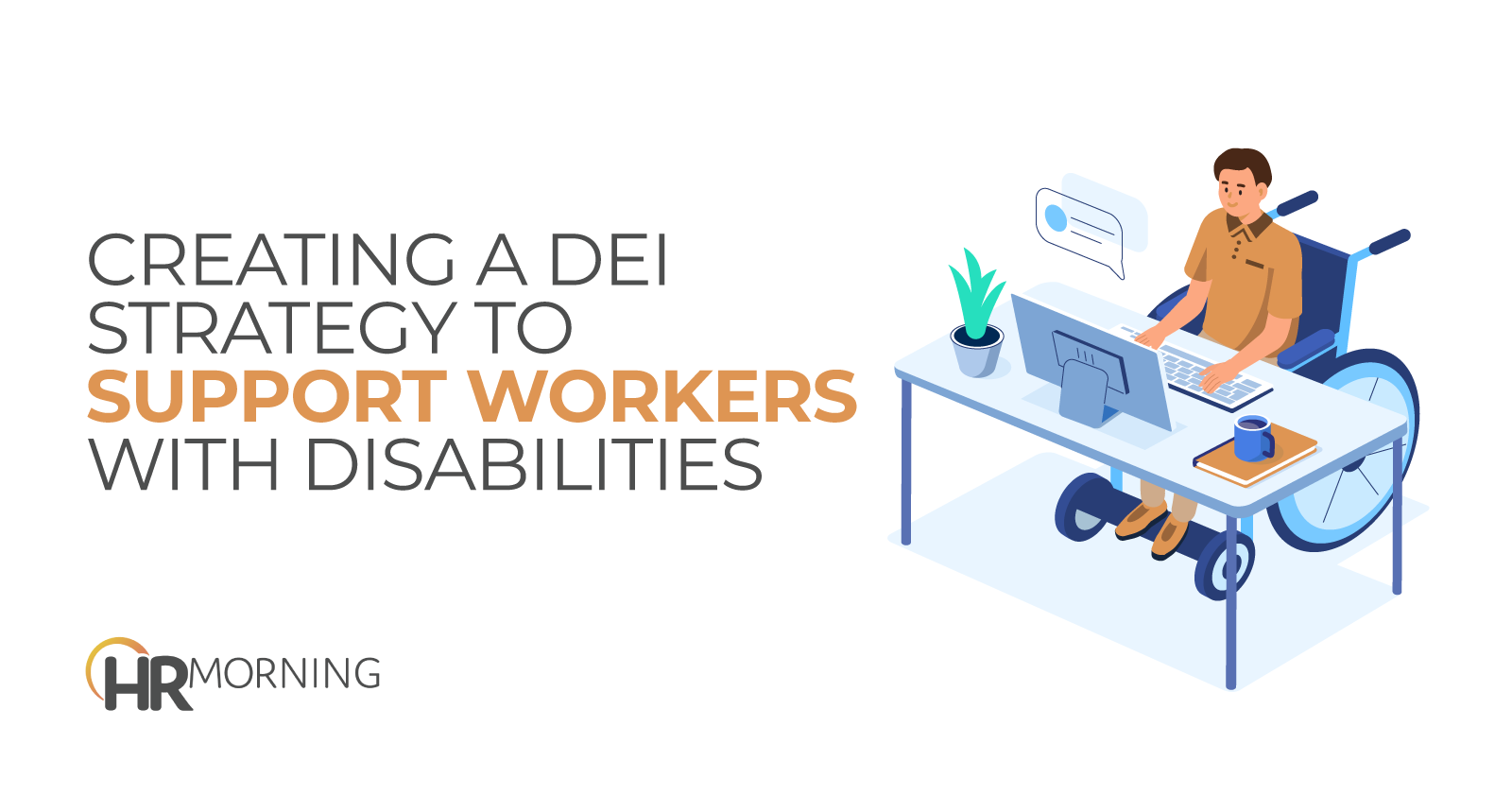Diversity, Equity and Inclusion (DEI) should be more than a trendy sentiment. A top-notch DEI program can help promote inclusivity, further diversity initiatives and goals, and help businesses work toward a truly equitable workplace.
However, DEI strategies can sometimes overlook people with disabilities. Not including people with disabilities in your DEI strategy can unintentionally keep quality candidates out of your talent pool and isolate current employees with disabilities, leading to disengagement and turnover.
For a truly impactful and complete DEI strategy, it’s essential to put disability inclusion at the forefront of your strategy.
The importance of disability inclusion
Disability inclusion is important to let potential or current employees know that your business is committed to having a diverse and inclusive workforce. A company committed to diversity and inclusion also helps to create a culture of openness and belonging, leading to a happier and more engaged workforce.
Even if you don’t have any employees with visible disabilities, that doesn’t mean that you should put disability inclusion on the back burner. People with disabilities that aren’t visible to the naked eye – so-called “invisible disabilities” – can feel especially isolated in a workplace that isn’t committed to inclusion.
“Millions of people go to work every day with non-apparent disabilities like epilepsy, multiple sclerosis or depression, but they keep it a secret out of fear of being treated differently by their coworkers or employers,” says Joy Canonigo, Director of Diversity, Equity and Inclusion at Discover Financial Services.
It’s also important to acknowledge that disabilities can develop over time, either from illness, accidents or the progression of a chronic health condition. If your company is already committed to disability inclusion, it can be easier to support employees who have recently been diagnosed or take care of a loved one with a disability.
Creating an inclusion strategy
Not putting enough time or education into a DEI strategy can be harmful for individuals with disabilities.
“Companies should focus on strengths over challenges as discussions about disabilities can sometimes be deficit-based, [such as] what exceptions do we need to make, how will this affect their performance, etc.,” says Canonigo. “Those types of conversations can lead the group to focus on deficits versus strengths and capabilities. By focusing on talent, strengths and opportunities, companies can center the conversation on what’s more important which is leveraging human potential.”
Creating an inclusion strategy that includes people with disabilities is an important step toward a truly equitable workplace.
“Disability inclusion strategies should incorporate principles of universal design and accessibility into their plan,” Canonigo suggests. “I often hear people say that it’s hard accommodating everyone’s needs. So consequently, we end up designing for the majority, the 80%, which is not inclusive.”
Universal design can ensure that experiences and environments are accessible for everyone instead of that 80%. “Consider designing for the 20%, and you will design for everyone,” says Canonigo. “For example, at Discover, we train all people managers on a simple decision-making framework that helps them make more equitable decisions. One component of the framework is rooted in universal design; managers are asked to consider who was this design for, by, with and without.”
An impactful strategy also requires a focus on intersectionality.
“When it comes to DEI there is no such thing as a single-issue struggle,” says Canonigo. “Our identities are complex and intersectional. We advocate for issues that we can identify with and those that are in close proximity to values.”
3 ways that HR can incorporate disability inclusion
A strategy is a great place to start, but actually implementing those initiatives is the necessary next step. Here are a few ways to ensure you’re incorporating disability inclusion into your workplace.
Give employees inclusion resources. Employees with disabilities and allies can be given resources and tools to help support inclusion initiatives. “People are afraid to do the wrong thing, but if you give them the tools to do the right thing, they’ll do it,” says Canonigo.
Partner with outside sources. To make sure your hiring is inclusive of all potential candidates, it may be a good idea to team up with a third-party solution to attract, hire and retain talent of all abilities, such as neurodiverse candidates. It can also provide training for leaders on best hiring practices.
Provide leaders with guides. “Provide guides for team leads [related to] meeting etiquette guides [such as] visual descriptions, turning on transcription [and a] tech guide, and design questions to ensure all visual resources are accessible to all,” suggests Canonigo.


